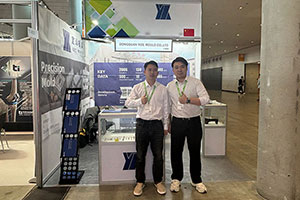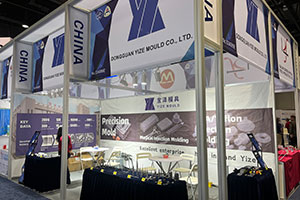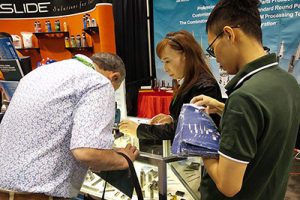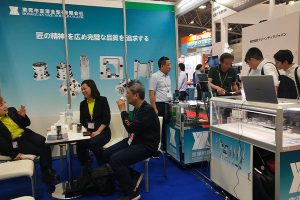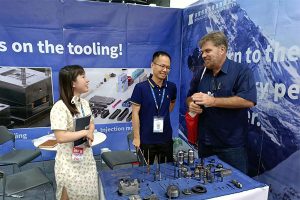Key Factors Affecting the Wear Resistance of Tungsten Carbide Dies
In the grand arena of industrial production, tungsten carbide dies are like valiant warriors clad in armor. With their high hardness, high strength, and excellent wear resistance, they play an […]
In the grand arena of industrial production, tungsten carbide dies are like valiant warriors clad in armor. With their high hardness, high strength, and excellent wear resistance, they play an irreplaceable role in numerous fields. Whether it’s the precision manufacturing of electronic components or the large-scale processing of mechanical parts, tungsten carbide dies are indispensable. However, in actual combat, the wear resistance of these “warriors” is subject to various constraints. This not only affects the service life of the dies but also reduces processing efficiency and increases production costs. This article will delve into the main factors influencing the wear resistance of tungsten carbide dies, analyze their mechanisms of action, and provide practical references for enhancing the wear resistance and extending the service life of tungsten carbide dies.
Material Composition and Structure: Laying the Foundation for Wear Resistance
Tungsten Carbide Content: A Double-Edged Sword
Tungsten carbide, as the main hard phase in tungsten carbide dies, acts as the “anchor” for their wear resistance. A higher content of tungsten carbide is like injecting a powerful boost into the dies, significantly improving their hardness and wear resistance. However, an excessively high tungsten carbide content is a double-edged sword. It increases the brittleness of the dies, similar to putting on overly heavy armor for a warrior, reducing their impact resistance. When facing complex working conditions, the dies are more prone to failure.
Bisnis pabrik kami: suku cadang karbida, suku cadang cetakan, cetakan injeksi medis, cetakan injeksi presisi, cetakan injeksi PFA teflon, alat kelengkapan tabung PFA. email: [email protected],whatsapp:+8613302615729.
Metal Binders: The Magic of Bonding and Reinforcement
Metal binders such as cobalt and nickel play the role of “glue” in tungsten carbide, tightly connecting the tungsten carbide particles while influencing the strength and toughness of the dies. Different types of metal binders are like different magic potions, having unique effects on the wear resistance of the dies. Cobalt, a commonly used metal binder, can significantly enhance the wear resistance and toughness of the dies, enabling them to withstand friction and impact more effectively. Nickel, on the other hand, endows the dies with excellent thermal fatigue resistance, allowing them to remain stable in high-temperature environments.
Microstructure: Precise Layout in the Microscopic World
The microstructure of tungsten carbide is like a microscopic city, where the shape, size, and distribution of tungsten carbide particles, as well as the phase state of the metal binder, are important elements of this city. A reasonable microstructure makes the “city” of the dies more robust and durable. For example, fine tungsten carbide particles and a uniform distribution are like well-arranged buildings and smooth traffic in a city, improving the wear resistance and toughness of the dies.
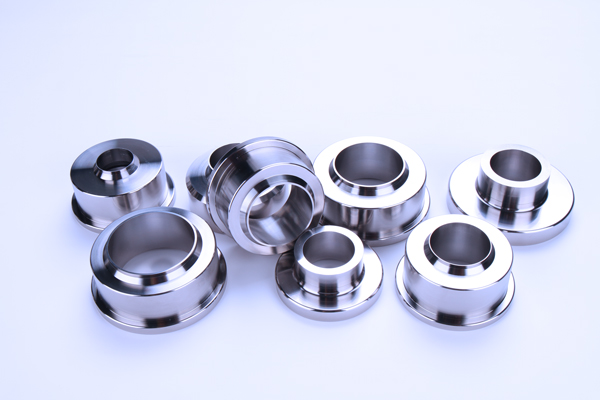
Manufacturing Process and Heat Treatment: Shaping Wear-Resistant Quality
Manufacturing Process: Step-by-Step Precision for High-Quality Products
The manufacturing process of tungsten carbide is like cooking a delicious dish, with each step being crucial. Powder metallurgy, pressing, and sintering are interlinked processes. Among them, pressing and sintering processes have a profound impact on the wear resistance of the dies. Appropriate pressing pressure and sintering temperature are like precise control of the cooking fire, enabling the tungsten carbide particles to bond tightly and form a dense microstructure, thus qualitatively improving the wear resistance of the dies.
Heat Treatment: The Art of Tempering and Adjustment
Heat treatment is a magical process for improving the performance of tungsten carbide dies. Through quenching, tempering, and other processes, it’s like giving the dies a comprehensive “physical training,” adjusting their hardness and toughness to enhance their wear resistance. However, temperature control during heat treatment is like walking a tightrope. A slight mistake can lead to problems such as die cracking or deformation, rendering previous efforts in vain.
Working Environment and Processing Conditions: Tests from External Challenges
Working Temperature: The “Roast” under High Temperature
Working temperature is an “invisible killer” affecting the wear resistance of tungsten carbide dies. In high-temperature environments, the surface of the dies is like an iron plate placed on a fire, prone to oxidation and wear, significantly reducing their wear resistance. Therefore, dies used in high-temperature environments need to be made of tungsten carbide materials with excellent high-temperature resistance, and effective cooling measures should be taken to “cool down” the dies.
Working Pressure and Load: Endurance under Heavy Pressure
Working pressure and load pose a severe test to the wear resistance of tungsten carbide dies. Under high pressure and load, the surface of the dies is like a shoulder bearing a heavy burden, susceptible to severe friction and wear. Therefore, when designing and selecting dies, it’s essential to fully consider the magnitude of working pressure and load and choose appropriate “equipment” for the dies to ensure they have sufficient strength and wear resistance.
Lubrication Conditions: The “Buffer” against Friction
Lubrication conditions are an important “lubricant” affecting the wear resistance of tungsten carbide dies. Good lubrication is like applying a layer of lubricating oil between the dies and the workpiece, significantly reducing the friction coefficient between them and minimizing wear and energy loss. In actual production, it’s necessary to select appropriate lubricants and ensure they form a uniform lubricating film on the die surface to safeguard the wear resistance of the dies.
Die Design and Shape: Optimization of Internal Structure
Die Design: Wise Design to Reduce Wear
Die design is the key “code” affecting its wear resistance. A reasonable die design is like a well-planned urban layout, reducing stress concentration and deformation of the dies and improving their stability and wear resistance. For example, adopting rounded transitions and reducing sharp corners in design are like adding rounded edges to buildings in a city, reducing stress concentration in the dies and making them more “resilient.”
Die Shape: Challenges and Solutions for Complex Shapes
The shape and size of the dies also have a non-negligible impact on their wear resistance. Complex die shapes and sizes are like winding mountain roads, which may cause the dies to be subjected to uneven stress and wear during processing. Therefore, when designing and manufacturing dies, it’s necessary to fully consider the impact of die shape and size on wear resistance and take corresponding measures for optimization and improvement, enabling the dies to “handle” complex working conditions with ease.
Maintenance and Upkeep: The Secret to Prolonging Service Life
Die Maintenance: Regular Care to Maintain Vitality
Regular maintenance and repair of dies are the “elixirs” for improving their wear resistance and extending their service life. Just as we regularly maintain our cars, regularly cleaning impurities and oil stains on the die surface, checking the wear condition of the dies, and timely replacing severely worn parts can keep the dies in good condition and improve their wear resistance and stability.
Operational Specifications: Standardized Operations to Avoid Damage
Operational specifications also have a significant impact on the wear resistance of the dies. In actual production, it’s necessary to strictly follow the operating procedures and avoid improper operations such as overloading and overspeed cutting that can cause damage to the dies. Just as athletes need to abide by competition rules, standardized operations enable the dies to perform at their best in a safe environment.
In conclusion, the factors affecting the wear resistance of tungsten carbide dies form a complex and diverse system, encompassing material composition and structure, manufacturing process and heat treatment, working environment and processing conditions, die design and shape, as well as maintenance and upkeep. In actual production, we should act like a skilled commander, comprehensively consider the mechanisms of action and interrelationships of these factors, and take corresponding measures for optimization and improvement, enabling tungsten carbide dies, these “warriors,” to be more formidable in the battlefield of industrial production. At the same time, we should also pay attention to the application of new materials, new processes, and new technologies to inject new vitality into the development and innovation of tungsten carbide die manufacturing technology.


